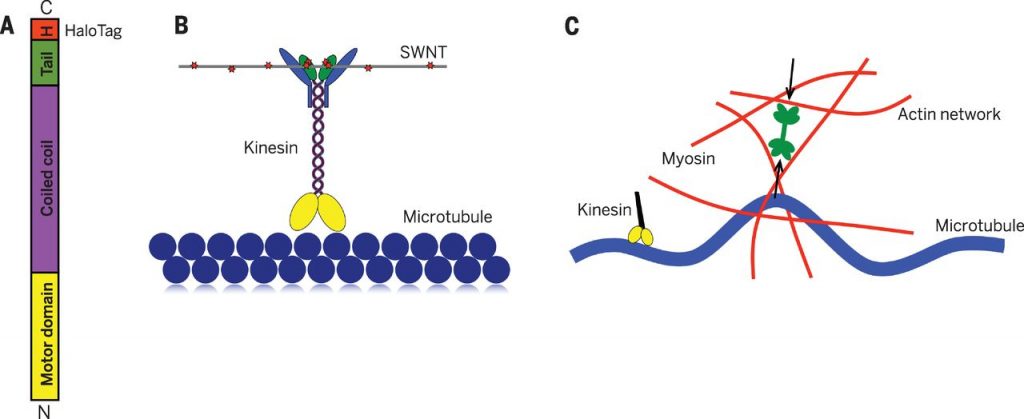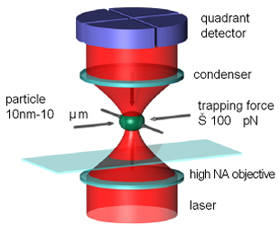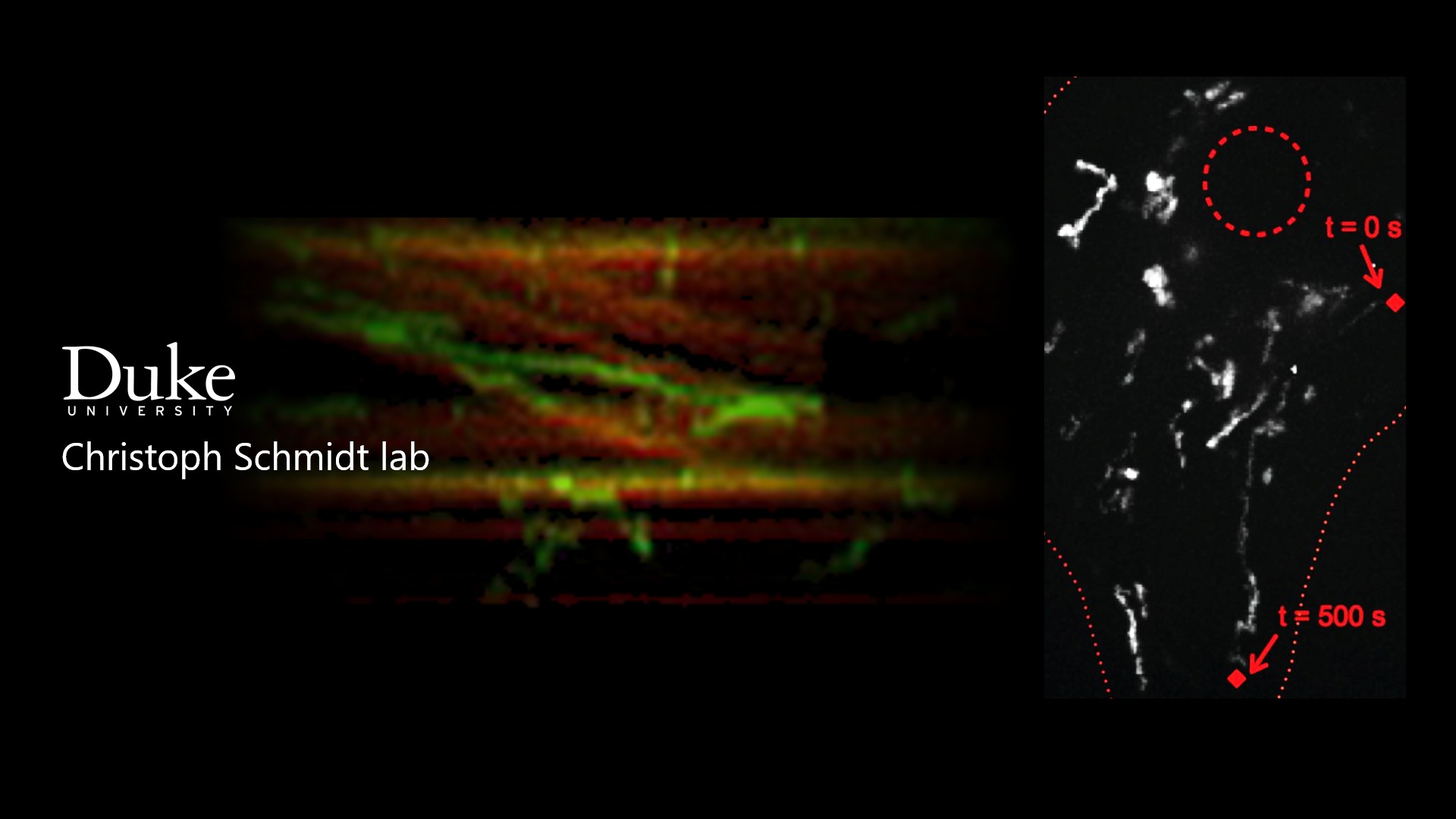Imaging by highly stable near-infrared luminescence by single-walled carbon nanotubes
we used single-walled carbon nanotubes (SWNTs) as a tool for high-bandwidth intracellular tracking. SWNTs are stiff quasi–one-dimensional tubular all-carbon nanostructures with diameters of ~1 nm and persistence lengths above 10 μm. Individual semiconducting SWNTs luminesce with large Stokes shifts in the near-infrared (900 to 1400 nm). This window is virtually free of autofluorescence in biological tissues. Fluorescence emission is highly stable with no blinking and negligible photobleaching (, allowing for long-term tracking. The fluorescence lifetime is short [~100 ps ] so that high excitation intensities allow millisecond time resolution.

Optical Trap
New experimental techniques are developed and further developed in our lab, with emphasis on high-resolution microscopy methods and single-molecule manipulation techniques (optical traps, atomic force microscopy), single-molecule fluorescence/spectroscopy techniques and microrheology. For example, we have explained how a first order interference effect makes it possible to detect motions of a particle trapped by an optical trap by monitoring the distribution of light intensity in the back-focal plane of the lens collecting the trapping laser light. Many subtle issues are furthermore involved in calibrating optical traps.

